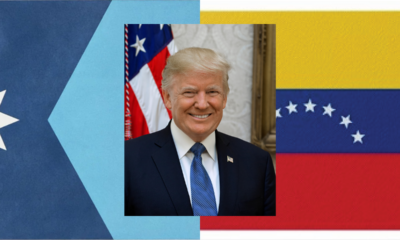Constitution
Social media injunction back – but weakened
The Fifth Circuit Court ruled the government may not threaten social media – but may still persuade. The willing bully problem remains.
Last week, the Fifth Circuit Court of Appeals rendered its decision in the interlocutory appeal in Missouri v. Biden. At issue was the Big Injunction against government coercion of social media platforms. Judge Terry A. Doughty of the U.S. District Court for the Western District of Louisiana (Monroe Division) handed this down on July 4. The government appealed immediately, and the Fifth Circuit heard argument on August 10. Now that court has decided. The implications are clear, though apparently not obvious. To protect your freedom of speech on social media, you must decamp from the large platforms. The government can “persuade,” and because most social media need no persuasion, you’re out of luck. This decision removes all cover from social media platform administrators, and restores the advantage of the few platforms having the simplest – therefore the most permissive – content standards and moderation policies.
Essence of the new social media injunction
The Fifth Circuit Court of Appeals closed their case on Friday (September 8), but their docket page is still available. Attention now returns to the docket page for Missouri v. Biden at the District Court level. The Fifth Circuit handed down their Published Opinion, which contains a very short version of the original injunction.
Everyone got excited when the Fifth Circuit found that any, repeat any, government agencies “made” social media restrict free speech. The Fifth Circuit identified, in its view, the four worst offenders, which are the:
- White House,
- Office of the Surgeon General,
- Centers for Disease Control and Prevention (CDC), and
- Federal Bureau of Investigation (FBI).
These four agencies did one thing the Fifth Circuit found unlawful: they threatened social media companies with penalties. The Fifth Circuit’s standard is: if you threaten, and the other party caves, their conduct is on you. But if not, not!
So how does that matter? Simple: the Fifth Circuit let off the hook three other agencies who did everything short of threatening. Yet regular followers of Missouri v. Biden and, of course, the State Actor controversy will recognize these agencies as some of the worst offenders. They are the:
- Department of State,
- National Institute of Allergy and Infectious Disease (NIAID), and
- Cybersecurity and Infrastructure Security Agency (CISA).
Why the Fifth Circuit let these agencies off the hook
According to the Fifth Circuit, the NIAID never once sent representatives to meet with Trust and Safety Teams. True enough, Dr. Anthony S. Fauci, il capo di tutti i capi di stato maggiore di tutti gli ospedali americani, never sent a “Doctor Chan,” who would have been a counterpart to “Agent Chan,” Special Agent in Charge of FBI-San Francisco. Instead, Dr. Fauci stood at his podium and held National Grand Rounds every day. And as far as Twitter (now X) Trust and Safety were concerned, what he said, went. After Elon Musk bought Twitter, he (or someone else) abruptly revoked their COVID Medical Misinformation Policy. But a broader Crisis Misinformation Policy remains, of which the Fifth Circuit took explicit cognizance.
As to the State Department and CISA, the Fifth Circuit found nothing threatening in anything those agencies, or any agent thereof, ever said. But we know that what they did say, while not threatening, was mendacious. Still, ill-natured people will always find an excuse. These Trust and Safety people knew they needed a story for their users. So it was and is better for the State Department and CISA to be the liars, than they. And beyond that: CISA wanted the abortive Disinformation Governance Board.
The essential result
So the essence of the watered-down and pared-down injunction is this. It names a laundry list of:
- White House officials (“Executive Office of the President”), including the White House Press Secretary,
- The Surgeon General, his Chief Engagement Officer, and “their directors, administrators, and employees,”
- Several CDC officials, mainly the ones whose names have come up in motions and hearings before Judge Doughty, and
- Special Agents/Supervisors Laura Dehmlow and Elvis Chan, FBI.
But this also leaves off the hook the:
- Election Integrity Project,
- Virality Project, and
- Stanford Internet Observatory.
True enough, the apologists for the censorship regime will squeal like stuck pigs at the very idea of enjoining or constraining the White House, the Surgeon General, the CDC, or the FBI. As far as legacy media are concerned, everything those agencies did with social media was and is right and just. “There ought to be a law,” they typically say, against vaccine refusal or challenging elections that leftists “won.” (Note that Donald J. Trump faces that second specific charge.) So any threat any of these agencies make is the lawful equivalent of a cop saying, “Stop, or I’ll shoot.”
But all of that is incidental – and might even be Kabuki Theater. The original injunction forbade ten separate things. Now only one prohibition remains – government agents may not threaten. But they may do whatever else they like, short of threatening.
Social media – the good guys and the bad guys
Again we must face this stark reality. To the extent that the government agencies did not have to threaten, social media moderators needed no persuasion. Discerning where some Trust and Safety people felt their integrity was on the line, is difficult to impossible. They agreed in principle that some things are beyond the pale, and no one should allow anyone to say them.
What, then, shall we say about social media companies who did not agree? What of Gab (actually an acronym for Go And Build), whose founder built an entirely independent infrastructure? The only thing Gab lacks at present is its own Internet Service Provider. After host after host kicked them off, they built their own. And after Google and Apple kicked them out of the Google Play Store and Apple App Store, respectively, they developed an easy-to-teach routine by which a user can create a browser shortcut that works just as well as any app. So today, whenever the United States or any government tells them to take down content, they answer in three words.
GO
POUND
SAND.
Recently they published two statements emphasizing this attitude, one on censorship generally, the other on the European Union Digital Services Act.
And what of Rumble, the terms of service of which are far simpler than those of YouTube? (Gab does have its own video service, but that service still has technical problems Rumble has solved.)
Summary
In short, the new injunction does little to bring about freedom of speech. For that we must rely on people like:
- Andrew Torba, who built his own social media empire,
- Elon Musk, who is sending conflicting signals but who already is running X (Twitter) better than his predecessors did, and
- Dan Bongino and his colleagues at Rumble.
The anti-threatening rule might make those people’s lives easier. Furthermore, conventional social media platforms may no longer plead, “They made us do it!” Even this watered-down injunction does not allow such “making,” and everybody knows that. So anything they do, they do of their own free will. Users must exercise their own free will – by joining social media platforms that won’t “do it” even if asked.
Terry A. Hurlbut has been a student of politics, philosophy, and science for more than 35 years. He is a graduate of Yale College and has served as a physician-level laboratory administrator in a 250-bed community hospital. He also is a serious student of the Bible, is conversant in its two primary original languages, and has followed the creation-science movement closely since 1993.
-

 Civilization3 days ago
Civilization3 days agoMuslima (Political Candidate) In Ohio: “I Might Have A Bomb-Gun,” On A School Bus Filled With Children – In America! (Video Resurfaces)
-

 Civilization19 hours ago
Civilization19 hours agoTrump’s Venezuela Gamble and America’s Shifting National Security Strategy
-

 Civilization18 hours ago
Civilization18 hours agoOperation Absolute Resolve: Anatomy of a Modern Decapitation Strike
-

 Executive4 days ago
Executive4 days agoWaste of the Day: Throwback Thursday – In 2010, “Dick Clark’s Dumpin’ New Year’s Eve”
-

 Civilization3 days ago
Civilization3 days agoVP Vance’s Splinter Problem
-

 Civilization2 days ago
Civilization2 days agoTrump delivers deeds, not words
-

 Executive4 days ago
Executive4 days agoWaste of the Day: Not Working Didn’t Stop CA Employee From Getting Paid
-

 Civilization4 days ago
Civilization4 days agoSeizing the Moment for U.S. Nuclear Energy Dominance










